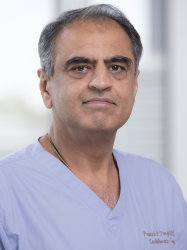BibTex format
@article{Whitlock:2021:10.1056/NEJMoa2101897,
author = {Whitlock, RP and Belley-Cote, EP and Paparella, D and Healey, JS and Brady, K and Sharma, M and Reents, W and Budera, P and Baddour, AJ and Fila, P and Devereaux, PJ and Bogachev-Prokophiev, A and Boening, A and Teoh, KHT and Tagarakis, GI and Slaughter, MS and Royse, AG and McGuinness, S and Alings, M and Punjabi, PP and Mazer, CD and Folkeringa, RJ and Colli, A and Avezum, A and Nakamya, J and Balasubramanian, K and Vincent, J and Voisine, P and Lamy, A and Yusuf, S and Connolly, SJ},
doi = {10.1056/NEJMoa2101897},
journal = {New England Journal of Medicine},
pages = {1--10},
title = {Left atrial appendage occlusion during cardiac surgery to prevent stroke},
url = {http://dx.doi.org/10.1056/NEJMoa2101897},
volume = {384},
year = {2021}
}

